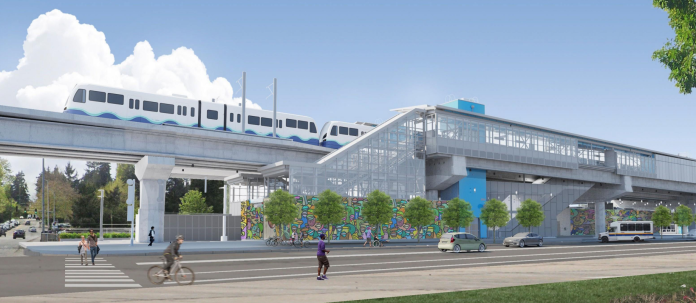
Months after the Sound Transit board voted to accelerate the construction of Sound Transit’s NE 130th Street light rail station from 2031 to 2025, Sound Transit has announced that the earliest the infill station between Northgate and Shoreline South Stations will open is 2026. The delay was announced last week at Sound Transit’s system expansion committee meeting, where board members were told that the agency was now working toward a station opening in the second quarter of 2026, just short of two years after the currently scheduled start date for the rest of the Lynnwood Link extension.
The delay is not unexpected, with many major projects across the region still recovering from the monthslong work stoppage caused by the concrete worker’s strike. While disappointing, the added delay in opening what will be Seattle’s northernmost light rail station and its last new station until the 2030s could give the Seattle Department of Transportation (SDOT) a greater head start on ensuring that 130th Station, which suffers from considerable station access issues, is more accessible to riders by the time it opens for service.

In early 2021, SDOT released a study on how station access could be improved for people accessing it from all directions, ranking the projects that would do the most to improve access. Now, the department is seeking a federal grant through the Puget Sound Regional Council to construct a slate of projects that it says would start construction in 2025, completing not far from the 2026 opening date for the station if all goes according to plan.
Of the 3,400 daily riders expected at NE 130th Street Station, Sound Transit expects just 10% to arrive by personal car in part because the station won’t have a parking garage, unlike the nearby Shoreline South Station at 148th Street. The remaining passengers are anticipated to be roughly split between bus transfers and direct walk or bike trips. Currently no buses serve the area where 130th Street station will be, and biking facilities in the area are not robust.
In the next few years, Metro will plan a restructure of the bus routes in the area, where at a minimum Route 75 will be rerouted to provide direct service between Lake City and the light rail station. Metro’s long range plan envisions frequent service along 130th and 125th connecting the light rail station with other north-south transit options on Lake City Way and Aurora Avenue N.
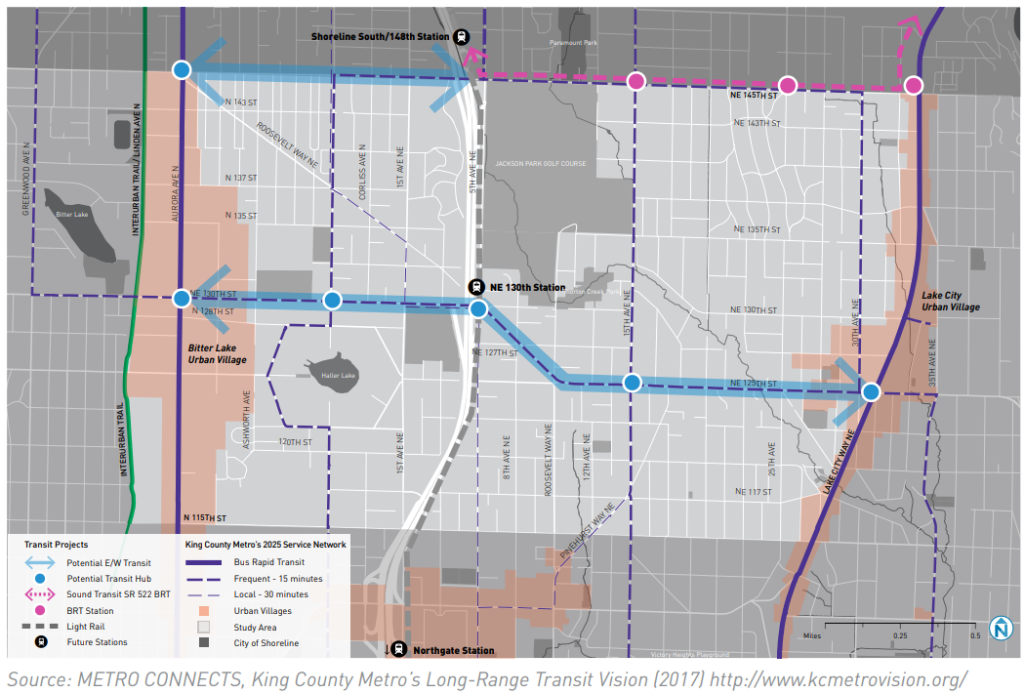
SDOT’s grant application envisions spending $14.5 million constructing improvements to improve transit stops between the station and the heart of Lake City, and improving nearby pedestrian and bicycle facilities. Here are the priorities that emerged the projects identified in SDOT’s 2021 study.
I-5 overpass improvements
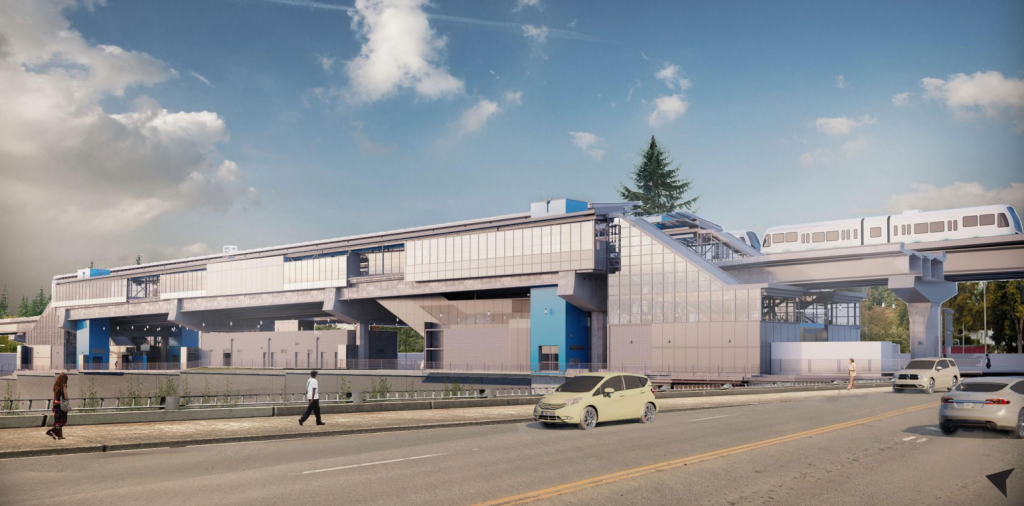
The I-5 overpass at 130th Street, which every walker or roller accessing the station from west of I-5 will have to use, only has a narrow sidewalk. SDOT would narrow lane widths on the four lane overpass to provide room to expand the sidewalk along the north side of the bridge, creating a multiuse path that would then be extended west to 1st Avenue NE. There connections are envisioned to a neighborhood greenway or potential bike facilities on N 130th Street.
The north-side multiuse path concept is very similar to what is planned on the NE 145th Street overpass, only without the roundabouts. Could Seattle also build an I-5 overpass at 130th Street just for people walking and biking? It’s discussed as an option in the SDOT’s study, but it’s likely that the city would prioritize a new highway overpass elsewhere since the station is relatively close to the existing overpass.

Pedestrian improvements
Among the pedestrian improvements outlined in the grant request is a new signalized crossing at Roosevelt Way NE and NE 8th Street, where no crossing currently exists. This is envisioned as one element in a future neighborhood greenway on NE 8th Street. That greenway itself is outside the scope of this package of improvements, although.
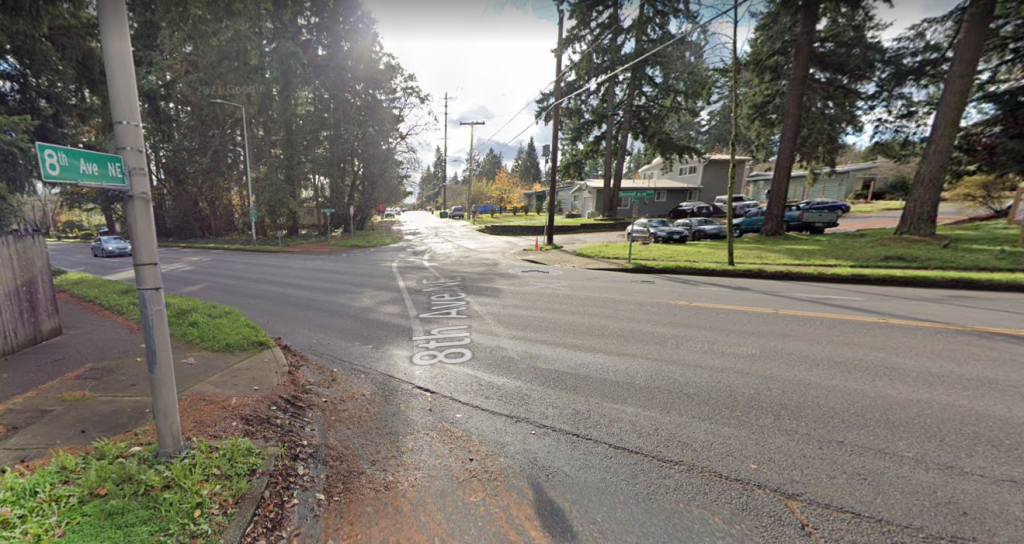
Also planned are pedestrian crossing improvements along the entire Roosevelt Way NE and NE 125th Street corridor between the station and Lake City. So far, we don’t have a complete picture of what those might be yet, but we could expect curb extensions, additional marked crosswalks, and signal upgrades including leading pedestrian intervals. Those signal upgrades are also expected to come with transit service priority to keep buses moving more quickly through the east-west corridor.
Protected bike lanes?
NE 125th Street has bike lanes painted on either side of the street between 10th Avenue NE and 28th Avenue NE, but those lanes disappear where they’re needed most: through Lake City Way to the east and on Roosevelt Way NE, where there are no bicycle facilities at all. The 2021 access study identified this corridor as being a great candidate to upgrade to a protected bike lane all the way between the light rail station and Lake City Way. But it’s a bit early to say that’s what is being proposed.
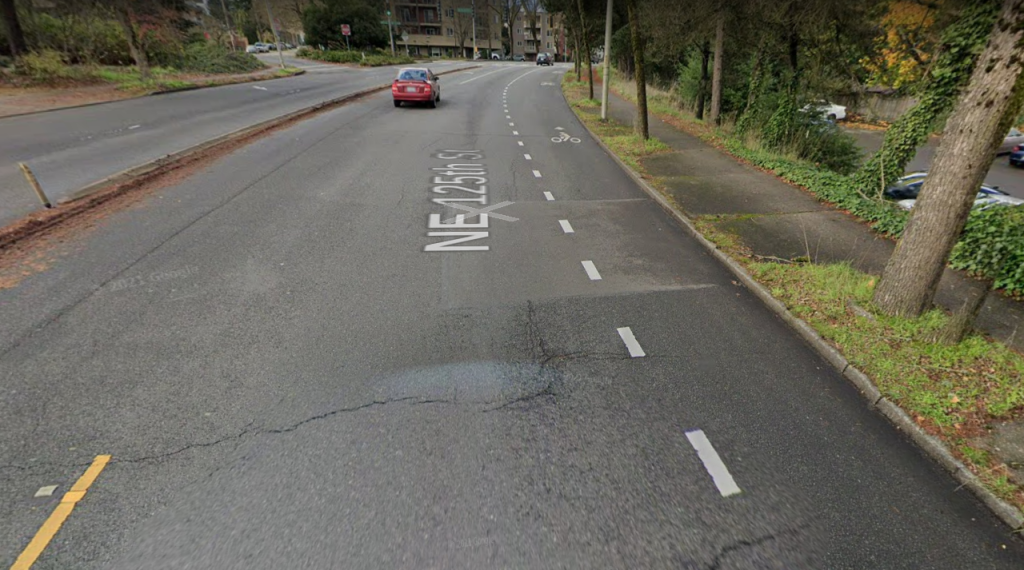
One element in the grant proposal is to “[m]ake safety improvements to reduce bike and bus conflicts. This may include protected bike lanes and installing in-lane bus stops with through-lanes for bikes where existing bus stops and bike lanes are currently located along the corridor.” Filling in the missing gaps between the existing bike lanes isn’t explicitly laid out, and will be something to keep an eye on as the project develops.

Additional delay in getting 130th Street station open is disappointing, of course, but it does give SDOT additional time to make transit, walking and biking connections to the station a lot easier, something that the City of Seattle has fallen short on many times in the past. Here’s hoping everything comes together and the department is able to make it happen.
Ryan Packer has been writing for The Urbanist since 2015, and currently reports full-time as Contributing Editor. Their beats are transportation, land use, public space, traffic safety, and obscure community meetings. Packer has also reported for other regional outlets including BikePortland, Seattle Met, and PubliCola. They live in the Capitol Hill neighborhood of Seattle.

